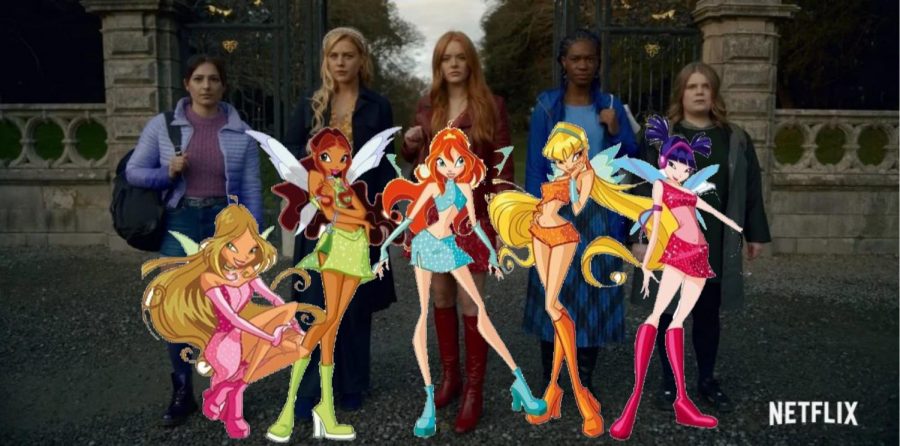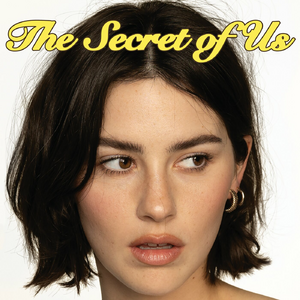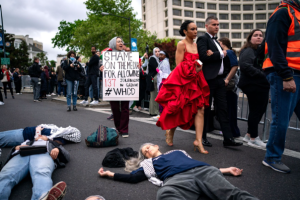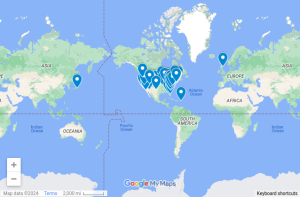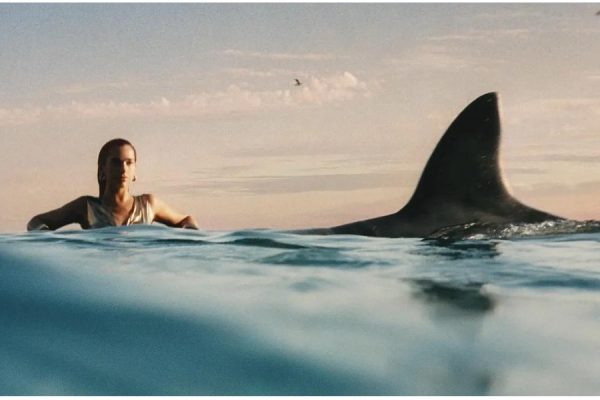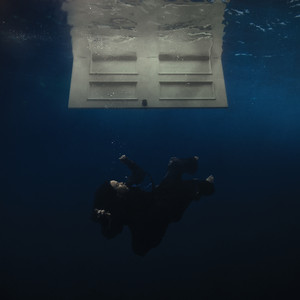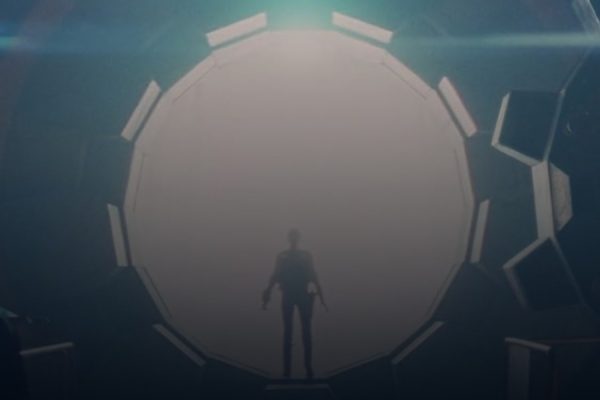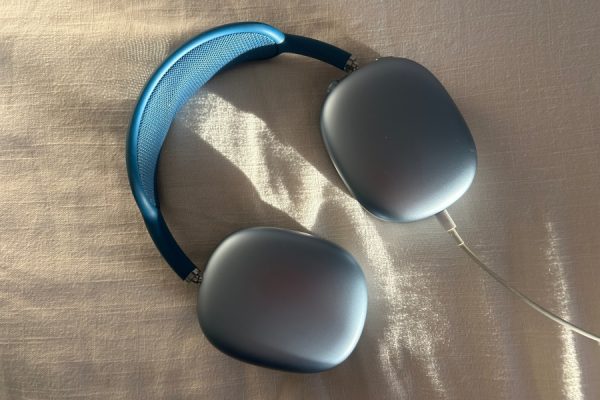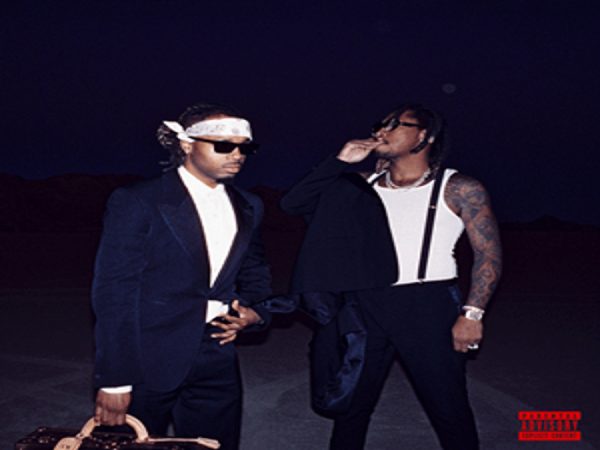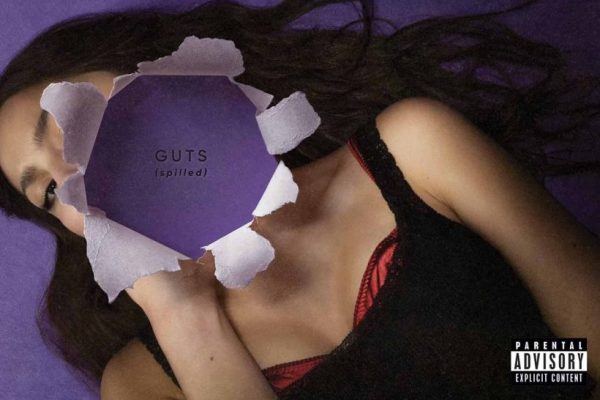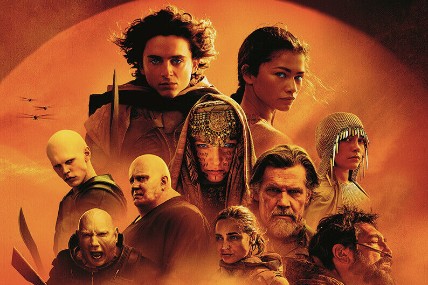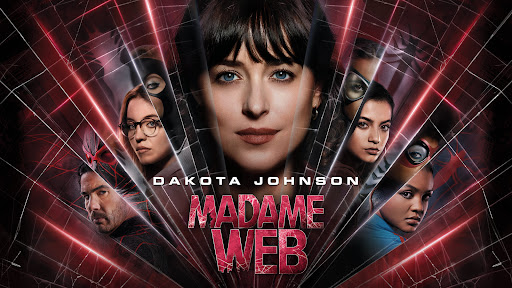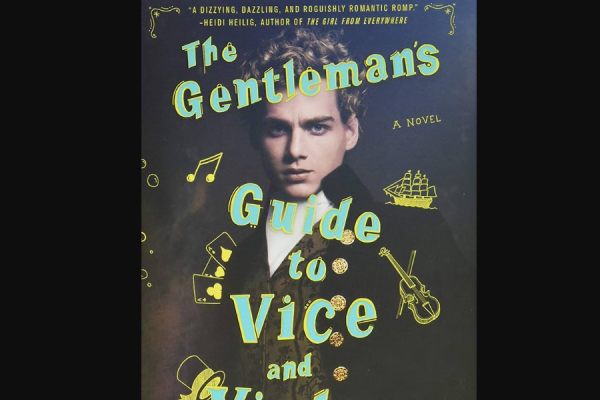Netflix’s Winx Club adaptation will clip your wings
Fate: The Winx Saga, doesn’t compare to the original Winx Club.
January 29, 2021
A tasteless and boring disgrace would be what comes to mind when I think of this atrocious money-grab Netflix calls a show.
Premiered on Netflix on January 22nd, “Fate: The Winx Saga” is an adaptation of the 2000’s popular children’s cartoon “Winx Club”. Unlike the fashion-forward, diverse, and interesting cartoon, this show plummets into overdone tropes, whitewashing, and a lack of care to costuming.
The season follows protagonist Bloom, who’s from the human world when she enters Alfea School for Fairies. Bloom’s a fire fairy who didn’t know of her powers until she almost burned her parents alive. Bloom joins Alfea and becomes roommates with Stella, a light fairy, Terra, an earth fairy, Aisha, a water fairy, and Musa, a mind fairy.
The story follows Bloom as she learns more about her secret identity as a changeling (Fairy replacing a human in the human world) and grows her magical powers. The characters all engage in stereotypical teenage activities including drinking, partying, and romantic endeavors while balancing training at Alfea.
When Bloom learns of her past and how she’s been lied to, she falls down a rabbit hole of uncovering the truth in order to cease her confusion and accept herself and identity along with the help of her new roommates and fellow fairies.
Now, this may sound like a tolerable plot, and I have to say, out of all the things that upset me in this show, the plot doesn’t rank very high on this list. The plot isn’t what caused my disdain for this show, it’s everything else.
The erasure of characters of color and whitewashing of this show is one contributing factor to its demise. The original Winx club was groundbreaking for its time by showcasing racial diversity, featuring Latina, Black, and East Asian fairies in the main cast.
Despite the outlined racial diversity, the adaptation completely misses this. Flora, a Latina character initially inspired by Jennifer Lopez, is replaced under the new name of Terra. With both characters being earth fairies with similar personality traits and storylines, it’s clear they changed her name to save face after casting a white actor.
In the first episode, it’s mentioned that Terra is a cousin of Flora, but the question is why they chose to create a knock-off version of the original character. The source material they had for this adaptation was vast, but yet they decided to create a new character.
Terra is plus size, so that added representation that the original cartoon lacked, but the change in her race was unnecessary. Hollywood many times forgets that women can be more than one minority. Terra or Flora could have been a plus-sized Latina woman, but instead, it was decided that only one type of representation was enough.
The character of Musa was also whitewashed. Musa had initially been an East Asian woman inspired by Lucy Lu. Throughout the Winx Club cartoon, Musa’s ethnicity is reaffirmed with her east Asian inspired fashion and realm consisting of Chinese inspired architecture.
Despite this, actress Elisha Applebaum is white-passing. Some sources say she is ethnically partially Singaporean, but Applebaum’s acting profile specifies her ethnic type as “Hispanic, Mediterranean (fair), Middle Eastern, Middle Europe/Caucasian, Slavic/Eastern European, White”, none of which being east Asian. Taking a character who gave representation to east Asian women and replacing her with a white actress is harmful.
Now, if that wasn’t enough to convince you that this adaptation isn’t worth your time, then this surely will. The original Winx Club was not only revolutionary because of its diverse characters, but also because of its fashion. The Winx club inspired viewers because of the magic, but also because of the clothes. Practically every girl watching the show wanted to dress like them.
When it comes to fashion, Winx club was admired by young women for its trendy, elevated, and specifically-characterized fashion. Each Winx girl had their own fashion sense and real fashion designers frequently designed the girls’ outfits. The outfits were colorful, sought after, and eye catching.
Completely opposingly, Fate: the Winx Saga’s outfits look like they were made for middle-aged women in 2017. The outfits are drab with muted colors and tame designs, and overall, they are boring. Winx Saga had an opportunity to bring back a modernized version of this fashion, especially now that the early 2000s styles are becoming fashionable again, but chose not to deliver.
Some may disagree due to the reboot being advertised as a modern version with more realistic teenagers; despite this, it still falls flat. Modern shows still manage to design realistic teenagers with fashionable or at least bright outfits.
This Winx Club reboot almost had a duty to do this, as the original cartoon greatly embraced fashion and was one of the reasons for its success. Some examples of shows that manage to depict realistic teenagers while having fashionable or colorful outfits include Euphoria, Skins, or even Stranger Things. All of which reflected realistic teenage outfits or even enhanced them to create trends.
Along with all of this, Fate: The Winx Saga still manages to disappoint in one more way: the lack of strong female friendships.
The original Winx club was a strong female friend group. Everyone who watched it wanted friends like that. It transcended the time where misogyny was heavily rooted in media that outlined that girls could only hate one another or argue over boys.
The Winx adaptation regresses the progress achieved by its original cartoon. This is seen through the interactions of protagonist Bloom and her roommate Stella. They fall into overdone tropes of the rude blonde mean girl and ‘not like other girls’ main character both fighting for one boy.
This trope was completely unneeded especially when their friendship was stable and loving from the get-go in the cartoon. Viewers loved their friendship and the adaptation tarnishes it with boring tropes in an attempt to add some entertainment to this mess of a show.
A lack of friendship is further seen throughout the show when they have very few moments where they bond because they want to. The adaptation makes the girls all roommates which causes them to be forced into a friendship rather than choosing it, causing awkward and inorganic interactions.
Fate: The Winx Saga, truly disappointed me. When given such an influential show, I expected so much more than what I watched. All of the things that made me love the cartoon as a child was erased by something I’ve seen before in many poorly rated teen movies and shows. The Winx Saga intended to reinvent the nostalgic show for those who watched Winx in the past and new viewers, but I found this hard to watch.
I would question why this was even made since a clear lack of passion is present, yet we all know the answer. Audiences being click baited and manipulated by the Winx name to be lured to this show for views and profit. The erasure of POC was unacceptable, the fashion was poor, and the uninventive plot was embarrassing.
I honestly couldn’t recommend this show to anyone, it would be a waste of your time. You are better off watching the original Winx Club than this embarrassment.
2/10

